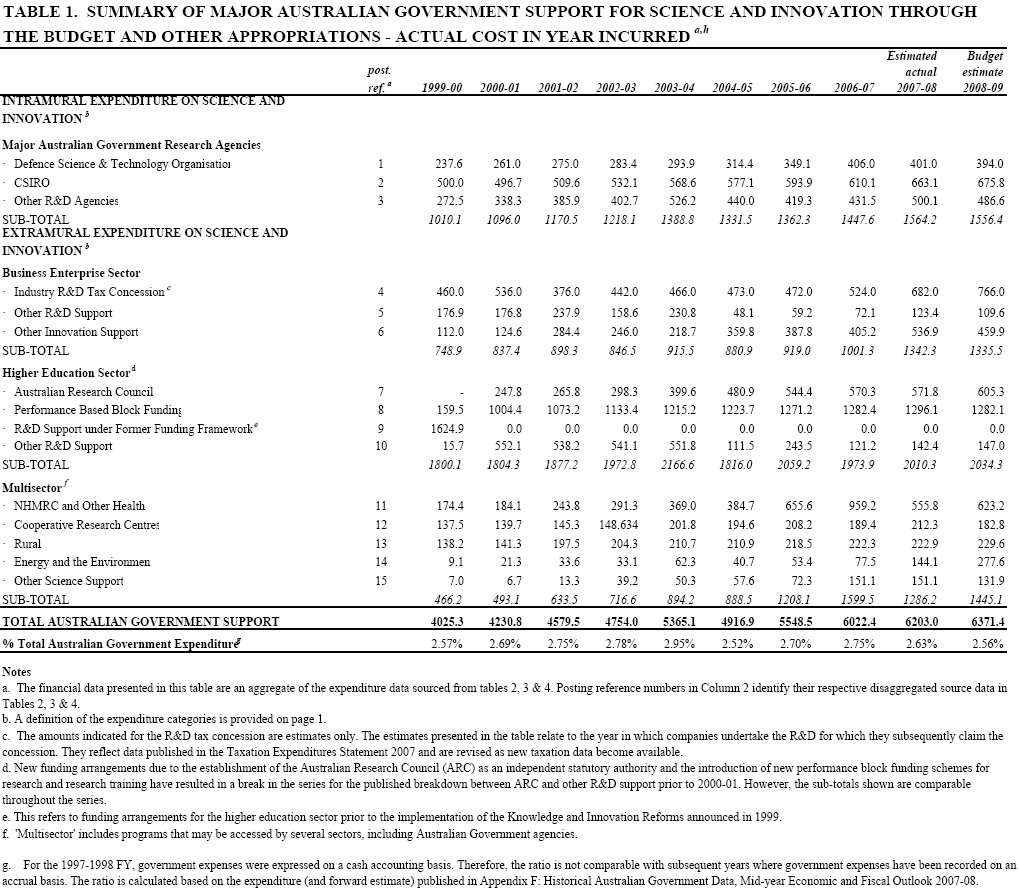|
|
|
|
|
|
|
News & Views item - May 2008 |
![]() The Federal Budget as Seen from Various Quarters. (May 15,2008)
The Federal Budget as Seen from Various Quarters. (May 15,2008)
The initial views regarding the Rudd government's 2008-09 Federal Budget as it effects the university and public research institutions can be summarised as it being a curate's egg.
Australian Academy of Science president, Professor Kurt Lambeck, pretty well summed matters up, telling the ABC: "We'd been told not to expect a great deal on science and technology and that was indeed the case... Our only concern is that [the reviews] could drag out and that the delay in funding into R&D could be deferred even longer."
As matters stand while the $500 million allocated for infrastructure upgrades for universities may be spent immediately, the interest from the $11 billion Education Investment Fund to repair crumbling infrastructure in universities, research and vocational training institutions will not become available until the second half of next year, after the outcome of a higher education review.
That said, if it is assumed the government is of good faith, now is the time for the universities to draw up their plans on how they would make best use of the funds.
It's to be hoped that best planned will be best dressed.
Professor Lambeck has also made the crucial point: "There's very little recognition [in the Budget] that the real infrastructure for the future is going to have to be intellectual infrastructure." So for example the funding for 1000 mid-career fellowships to realise full potential, requires universities to be equipped with adequate intellectual as well as physical infrastructure.
To what extent Professor Lambeck's admonition will influence the directions of the Cutler inquiry into the National Innovation System and the Bradley review of Australian Higher Education, as well as the inquiry by the House of Representatives into research training and research workforce issues, and to what extent the government will take notice is a key issue.
The Federation of Australian Scientific and Technological Societies (FASTS), Bradley Smith told the ABC: "Infrastructure funding, while welcome, doesn't go to the core of the problem."
And he emphasised the importance of providing new funding arrangements for universities, including full funding of research and teaching, and support to attract top-level international PhD students: "They're the big ticket things that we will be expecting to be addressed in 2009. If this is not done, then the credibility of the Government's claims about its commitment to education revolutions and the long-term productivity narratives will be in tatters."
The chair of the Group of Eight, University of Western Australia vice-chancellor Alan Robson, has his sights set on the 2009-10 budget, but nonetheless welcomes the immediate injection of $500 million for university infrastructure upgrades, pointing out that UWA for example has doubled external research income in the past five years but: "Eighty per cent of this is for salaries and we have to house all these people."
Below is Table 1 from the Budget paper The Australian Government's 2008-09 Science and Innovation Budget Tables. The complete set can be found at:
http://www.innovation.gov.au/Section/AboutDIISR/Documents/Budget0809ScienceandInnovation.pdf.
Allowing for a possible inflation rate623.2 of around 4%, the overall picture for the coming financial year isn't all that flash and the mantra "roll on 2009-10" is understandable.
Relatively speaking the NHMRC has done well, while CSIRO and the ARC haven't. The big winner based on tax concession estimates is industry R&D.

__________________________________________________
TFW thanks Peter Pockley for bringing The Australian Government's 2008-09 Science and Innovation Budget Tables to our attention.